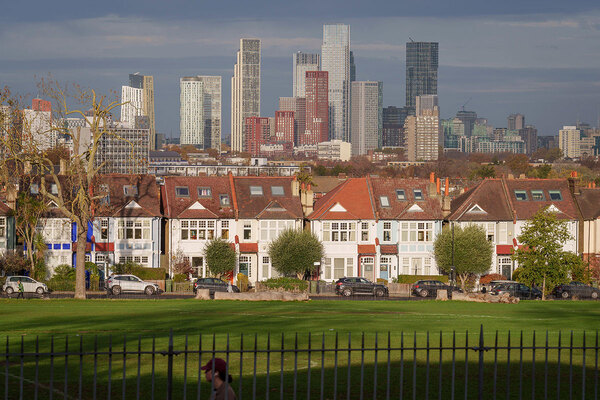Healthy Homes, Healthy Lives: The ROI of Retrofit in Reducing NHS Spend
Mustafa Mustafa, head of decarbonisation at Morgan Sindall Property Services, explores the link between retrofit and improved health outcomes for residents
As the UK accelerates its journey towards a low-carbon future, retrofit works have emerged as a cornerstone of sustainable development, offering a myriad of benefits beyond mere energy efficiency. For main contractors like Morgan Sindall Property Services, the mission to decarbonise existing building stock is not just about meeting regulatory targets; it’s about transforming lives, particularly within our healthcare system.
The NHS, a lifeline for millions, is burdened with escalating costs partly due to the ripple effects of poor housing. According to a BRE report, substandard housing is costing the NHS a staggering £1.4bn a year. New analysis from the Chartered Institute of Housing (CIH) states that reaching the EPC C target for social housing, could help the NHS save £85m a year from 2030. Each year, cold-related illnesses place tremendous pressure on NHS services, especially in the winter.
Cold, damp, and inefficient homes lead to a surge in respiratory diseases, cardiovascular conditions, and mental health challenges, all of which funnel vulnerable individuals into already stretched medical facilities. This financial strain underscores the urgent need for sustainable solutions that not only address energy inefficiencies but also improve public health outcomes.
The link between energy efficiency and health outcomes is well documented. A study by the London School of Hygiene & Tropical Medicine highlights that insulating homes is pivotal for health improvements and reducing hospital admissions, while also aligning with the UK’s net zero ambitions. Warmer, well-ventilated homes significantly reduce incidents of asthma, bronchitis, and other respiratory illnesses. This, in turn, alleviates pressure on NHS services, freeing up critical resources.
Modifying homes for an ageing population not only reduces stress on the NHS, but it also directly impacts care budgets. According to the Local Government Association, adaptation and improvement of home quality reduces social care costs by between £1,700 and £4,500 per person per annum and can cut GP visits by almost 50%. These figures point to a broader opportunity by retrofitting homes to be safer, warmer, and more accessible, we are enabling older adults to live independently for longer, reducing the reliance on institutional care and freeing up hospital beds.
The Guardian underscores this further, illustrating that warmer homes contribute to healthier populations, enabling a proactive rather than reactive healthcare model. By addressing the root cause inefficient housing, we pave the way for a healthier society while advancing the decarbonisation agenda. Preventative measures, like retrofitting homes, yield long term dividends, supporting a model of care that focuses on keeping people well rather than only treating them once they fall ill.
From a budgetary perspective, tackling cold homes alone is projected to save the NHS £540m per year. These are not hypothetical savings; they represent real opportunities for reallocating funds towards patient care, medical research, and innovative health programs. Furthermore, the financial relief gained through these retrofit initiatives presents a unique opportunity to reinvest into the UK’s housing stock.
By improving energy efficiency and addressing substandard living conditions, funds that are saved from reduced NHS burdens can be strategically channelled into further housing improvements, perpetuating a cycle of health and economic growth. This reinvestment strategy not only fortifies the housing sector but also aligns with national decarbonisation goals, enhancing the resilience and quality of UK homes for generations to come. When Morgan Sindall Property Services collaborates with registered housing providers the impact multiplies. As evidenced by NHS England’s partnership with local councils to enhance housing through Home. Collaboration lies at the heart of Morgan Sindall Property Services’ approach and is essential to unlocking systemic change.
Retrofitting the UK’s social housing stock doesn’t just benefit the NHS, it stimulates economic growth. According to research by the Academy of Social Sciences, investments in retrofitting can invigorate local economies, generate skilled jobs, and reduce energy poverty. For Morgan Sindall Property Services, this presents an opportunity to lead in sustainable construction, driving community resilience while contributing to national climate goals.
Retrofit of housing should not be considered purely from an energy efficiency and carbon emissions perspective but should be fully integrated into the plans for a prosperous and resilient local economy that meets the current and future needs of residents.
For those of us leading decarbonisation projects retrofit works are more than upgrades they are transformative. By enhancing energy efficiency, we alleviate pressures on the NHS, improve community health, and contribute to economic regeneration. The journey to a low-carbon future is paved with opportunity, and the NHS stands to benefit significantly from our collective commitment to retrofit works. Retrofit has the potential to improve people’s quality of life, reduce health and care disparities, as well as having wider benefits to the environment and society.



